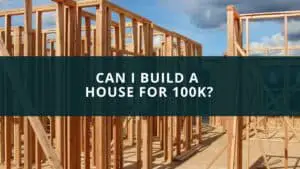Extreme Home Makeovers was a fantastic show while it lasted. Many people got their dream homes through the reality show and enjoyed other benefits. But the show, which ended in 2012, wasn’t all perfect. There were various issues and controversies, including the failure of many finalists to keep their homes. So, how many extreme home makeovers are in foreclosures?
The extreme home makeover made lots of people happy, but it also led a substantial number of homeowners into foreclosure with the gift of a better home that cost more than they could afford. Issues with the show include unnecessary improvements, poor and uncompleted renovations, tax issues, etc.
Regardless, the show, which now has a reboot, actually bettered some people’s lives. But like every other television show, it was more about ratings than actually making the lives of the people better. This article discusses why many extreme makeover homes had to foreclose and other issues with the show.
Quick navigation
What is Extreme Makeovers: Home Edition
Extreme Home Makeover is a reality television show where a team of builders, designers, and home remodeling specialists makeover a home within seven days. This was usually in the form of renovation, remodeling, or sometimes complete demolition and rebuilding of the selected home of the lucky weekly finalist. The show was originally on ABC network from 2004 to 2012, after which it came to an end. In 2020, it got a reboot on HGTV and is currently running. Although the show allowed people to get their dream house for free, it wasn’t without controversies. Foreclosures of the homes are one of them.
Why did Extreme Home Makeover Homes end in Foreclosures?
It’s impossible to determine how many homes featured on the show ended in foreclosure. But this happened in more than a few cases. It’s not surprising that many of these families ended up losing their homes to the banks. Most of the families on the show were living close to poverty or barely surviving when they appeared on the show. With the extreme makeover to their homes, they ended with additional expenses they couldn’t afford. Many took a mortgage on the property’s new value and found it impossible to avoid default due to the higher financial burden. Thus, the bank had no choice but to repossess and sell their property.
A good example is the Harvey family, who got a 4,289 square-foot home in 2005. Only six years later, the bank foreclosed and auctioned off the home. These patterns have happened many more times among those that appeared on the show. In all these cases, they took new mortgages on their expensive and more presentable home to pay off old debts or start something new, and they end defaulting on the loan. The renovated properties came with double or even quadruple the size of the old utility bills. Thus, many families had to take new mortgages to afford to keep their gifts.
Issues with Extreme Home Makeovers
Foreclosures weren’t the only problem with the show before it ended. In fact, there were several other serious controversies. These include:
1. Taxes
Finalists on the show had to contend with the higher taxes on their property. Initially, the show helped the families to reduce their tax bills creatively. It took advantage of a loophole that states that families don’t have to pay taxes on a rental income if they rented it out for less than 15 days a year. The show simply told the families they’re renting their house for a week and use that week to make the improvements. It then claimed the improvements are rental payments. This helped the families to avoid paying taxes on the improvements. But this only covered the upfront taxes. There were still future property taxes for the families since the property’s value increased due to the higher value of the home. The higher taxes meant more financial burden.
2. A Better House Doesn’t Fix Poor Economic Conditions
Having a beautiful home is a good thing, but there are usually more important things than that. The show failed to consider this when helping people achieve their dream homes. In most cases, those who got on the show have significant socioeconomic problems that they are battling with. A new home simply worsened the poor economic conditions since it meant more expenses for many people. This further pushed some of these families into poverty, forcing them into foreclosures or having to sell their houses as they could no longer afford it.
3. Over the top Home Improvements
Beyond the basic improvements to properties, one of the major complaints with the show is that some of the improvements on properties were unnecessary. The crew members added features to the house that served no functional purpose to show off their craftsmanship on television. This meant users had a house that constituted more of a burden than a benefit because all these useless additions usually needed more maintenance. The show producers eventually had to stop such, but that was only when it became a serious issue.
4. Effect Of a New House on The Family and Neighborhood
While the show is all about feeling good and making others feel good, the reality is that not every moment is good. The renovation and public appearance usually give the family unnecessary attention, which they might want to avoid. At times, this attention is positive. But it’s not always so. The attention sometimes comes with harsh criticisms once the show is over, and there might even be stalking from some of the show’s viewers.
Beyond that, a new house also has significant effects on the neighborhood. Although the neighbors might be smiling for the camera and offering a helping hand with improvements, a lot happens when the camera stops rolling. Newer and remodeled homes on the street usually mean higher property taxes. There’ve also been times when the remodeling causes damages to neighboring houses, and the nuisance that happens due to the construction process can leave many neighbors holding grudges for a long time.
5. Uncompleted Renovations and Poor constructions
Renovations and rebuilding on the show take about a week to complete. By all standards, that’s pretty short, and even though crew members usually have to work through the night, it’s sometimes impossible to complete all the necessary work within a short time. In some cases where they can’t, the show crew simply do enough work for the big reveal, and after that reveal, they move on. This leaves the burden of completing the project on the family.
There are also times when the construction work is below par, leaving the family with serious utility problems. The Georgia Yazzie family experience is a good example. Five months after the reconstruction, the house started having issues with the air conditioner, drainage, and irrigation system. ABC only covered some parts of the repairs while the family had to take care of the rest.
In Conclusion
Extreme Home Makeover is a nice feel-good show where many finalists got their dream homes free of charge. But the burden of that gift affected many of these families, leading many families into foreclosure and even worsening their economic conditions.



